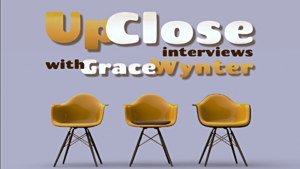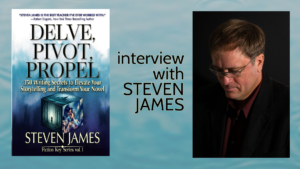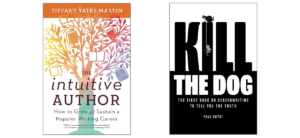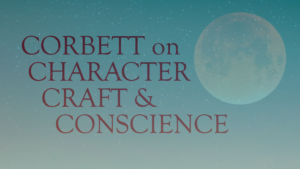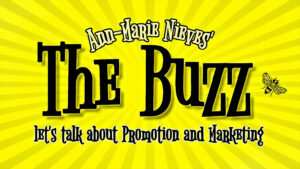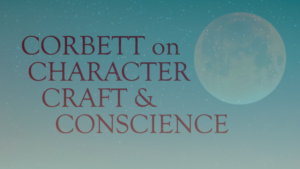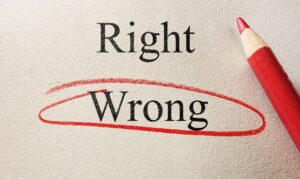traditional publishing
Greetings, WU Family. In my first post of the year, I’m introducing you to Ann Michelle Harris. Ann Michelle is an attorney by day, and at night, she writes romantic suspense and fantasy/speculative fiction with diverse characters and positive social justice themes. In today’s Q&A, she shares how her work in the areas of poverty, abuse, and child welfare guides her, how that work inspired her novel, North, and why she feels building community is one of the most important things a writer can do for their career.
GW: One of my favorite parts of this series is learning about an author’s origin story: the thing that propelled you from someone who only thought about writing to someone who actually wrote and has a book out. So, what’s your author origin story—in other words, why did you start writing and keep writing?
AMH: I have loved reading adventure stories since I was very young. I was an English major at Penn so I loved not just stories but also story analysis, themes, and structure. Several years ago, I went through a stressful time in my life and began immersing myself in escapist stories as a form of comfort. After months of consuming other people’s stories, I decided to become a contributor of short stories to a public writing forum. Positive responses convinced me that I might have a larger story worth telling and that I could be brave enough to take the risk to try to tell it. I specifically wanted to write an adventure story in honor of my children. Shortly after this, the pandemic came and gave me even more stress but also much more time to write since I no longer had to spend hours commuting to the office each day (and it gave me plot inspiration). That extra time allowed me to dig deeper into creating a full manuscript and begin the process of querying.
GW: Can you tell us about your path to getting North published?
AMH: After completing my manuscript, I began to query it to a few agents and independent publishing houses. I got rejections, but one rejection from a large indie press had detailed feedback about the plot (particularly the ending) and that helped me tweak some elements. I also worked with a developmental editor, a beta reader, and a critique group to fine-tune the scene structure and build more tension in the story arc. By then, I had heard from a few writers that it is sometimes more accessible to directly find a publisher than to find an agent. I had another historical gothic manuscript that was getting a lot of traction with agents, but I decided to pitch North to a small press at a writing conference, and they loved it after reading the full story. After I signed the publishing contract, I continued to fine-tune the manuscript and then worked with the publisher for editing, galleys, and cover design. I tweaked everything until it was ready for submission to the distributor, and then finally it went into pre-order. I used my pre-launch time to promote the book online, connect with readers, and lean heavily on the wisdom of my more experienced writer colleagues, who were incredibly supportive. Then the big day came […]
Read MoreFor today’s post I’m once again sharing the spotlight, this time with Steven James, whose writing guides are indispensable. His latest, Delve, Pivot, Propel, which arrived on December 3rd, is a crucial addition to his previous work, and it explores one particular issue I think is often neglected, inadequately addressed, or misunderstood: the pivot, aka the turning point or twist.
Steven is a critically acclaimed author of twenty novels and numerous nonfiction books that have sold more than 1 million copies. His books have won or been shortlisted for dozens of national and international awards. In addition, his stories and articles have appeared in more than eighty different publications, including the New York Times. He is also a popular keynote speaker and professional storyteller with a master’s degree in storytelling.
David: You’re one of the most relentlessly curious students of storytelling I’ve ever met. You’re always thinking about what makes stories great and how writers can accomplish that. Could you briefly outline what prompted you to take this new step in examining how stories work? What did you think was missing from other analyses of story? At one point you write, “[T]heexisting story theories were missing something essential to great stories, a moment in the narrative I’ve come to refer to as the pivot.” Was there anything else you noticed missing from existing analyses of stori
Steven: I’ve heard so many people espouse that stories have,“A beginning, a middle, and an end.” And every time I hear that, I think, “So does a bratwurst. How does the help me write my story?” Now, there’s nothing inherently wrong with this approach, but I don’t love it because it gives people the impression that a story is about a list of events—but it’s not. That’s a report. A story is about the collision of desires, not a progression of events.
Similarly, I had been trapped in the box of thinking of stories simply within a temporal framework—first act, second act, third act… inciting incident, rising action, dénouement—that sort of thing. It took me a long time to shift my thinking toward the narrative dynamics of the story and the essential elements to the story rather than continuing to parrot back the temporal aspects of story theory that we have all heard before. After all, you can have a story that works on the level of beginning, middle and end, but be entirely unsatisfying. How could that be? What were we missing? It took me a long time to realize what that was, and how to fix it in our stories.
The other aspects of story that I found were not taught enough were the pursuit and the payoff—that effective stories are not so much journeys as they are pursuits. And, you can have all the plot you want, but if there’s no emotional payoff in the story, you’re not going to impact your readers. So, I really had to step back from the paradigms I’d always heard (and taught) and take some new avenues toward a fresh perspective on story.
Stories always include tension, which is the result of desire meeting up with an obstacle. So, characters face an obstacle and, because of their unmet desire, they make purpose-infused choices that propel […]
Read MoreAs a connoisseur of writing how-tos (and yes, I had to look up how to spell connoisseur – and okay, “addict” might be a more accurate word), I have read a TON of them. And while I find valuable nuggets in nearly all of these books, lately I’ve noticed that many recent writing how-tos are essentially sharing slightly different flavors of some very similar core information.
So when I encounter a book about writing that offers some new (to me, at least) ways of looking at the craft, I sit up and take notice. My gushing ode to Chuck Palahniuk’s Consider This in this 2020 post is an example.
I just finished reading another such departure from mainstream writing how-tos: The Intuitive Author, by WU’s own Tiffany Yates Martin, who, in addition to being a wonderful writer and editor, is also an insanely good teacher and public speaker. Seriously, if you ever have the opportunity to attend one of Tiffany’s sessions or events, take it. And if you’re an author who speaks at literary conferences, trust me: you do NOT want to follow Tiffany. She’s that good.
Having seen Tiffany’s amazing presentation on backstory at WU’s brilliant 2022 OnCon, I knew what an extraordinary editorial mind she has, and how good she is at getting under the hood to amp up and improve your writing at multiple levels. So with The Intuitive Author, I guess I was expecting a book full of deep analysis into the mechanics of writing, along with some sophisticated editorial techniques. Instead, much of the analysis she offers in the book leans more towards the psychology and strategy involved in pursuing – and ideally, enjoying – the life of a writer.
I quickly realized I was not reading The Average Writing How-To, and I dove into the book with my curiosity piqued. (And yes, I had to double-check whether it was “piqued” or “peaked.” Got it right the first time – yay! Hey, it’s the small victories. But I digress…)
In short, The Intuitive Author is filled with insights and perspectives quite unlike those offered in the vast majority of writing how-tos currently on the market. And reading Tiffany’s book made me think about another writing how-to I’d recently read that takes a pretty big departure from most conventional writing wisdom: the provocatively titled Kill the Dog: The First Book on Screenwriting to Tell You the Truth, by author and screenwriter Paul Guyot.
What does this Guyot dude have against dogs, anyway?
Nothing, actually. Instead, the animal Guyot truly hates – and is taking a not-at-all thinly veiled swipe at – is the cat. Specifically, the cat in the well-known “Save the Cat!” series created by the late Blake Snyder.
If you’re not familiar, Snyder’s initial Save the Cat! book (STC to the cool kids) burst onto the scene in 2005 with a VERY structured set of templates for storytelling, which he reverse-engineered from studying many successful movie scripts. Targeted at aspiring screenwriters, Snyder’s methodology offered a compelling framework for them to adopt […]
Read MoreI’m guessing, given Tuesday’s election, most of us have been living in a world of, shall we say, heightened reality the past few days (if not weeks, or months). So, with no desire to diminish the importance or impact of that reality, allow me to offer a bit of a diversion, one I’ve had planned for some time: here’s an interview with Rachel Howzell Hall, known for her bestselling thrillers, about her turn to romantic fantasy with her latest book.
Rachel has been on a bit of a tear lately: her most recent previous novel, We Lie Here, was both a bestseller and nominated for a Los Angeles Times Book Prize. Before that she had three bestsellers in a row, What Fire Brings, What Never Happened, and These Toxic Things (also nominated for the Anthony Award, the Strand Critics Award, and the Los Angeles Times Book Award), with And Now She’s Gone garnering nominations for the Lefty, Barry, Shamus, and Anthony Awards.
With so much success in the thriller category, why jump ship and climb aboard an entirely different genre? I asked her that question (see below).
Meanwhile, The Last One, which comes out December 3, has garnered significant pre-publication praise:
The Last One can be pre-ordered now at Bookshop.Org, Amazon, B&N, Google Books, Kobo, Apple Books, or at your favorite local bookstore.
How did your agent (and/or editor/publisher) respond when you proposed a book so different from your past work?
Actually, it was my agent Jill Marsal who first reached out with the possibility of collaborating with publisher Liz Pelletier. I was thrilled at the opportunity—Liz is a genius. She was preparing to launch a new imprint from Entangled called Red Tower, filled with high-concept ideas she wanted to bring to life. I was honored to be one of the writers she thought would be a good fit for the project.
I get the feeling that this is a book you’ve been wanting to write for some time—have I got that right? If so, what kept you from getting to it sooner? How long did it take to imagine it, plot it out, and then get it down on the page?
I didn’t realize I wanted to write this book until I actually started. I was pretty intimidated by the idea of tackling not just one, but two new genres. I had never written a romance, and I had never written a fantasy. However, I soon discovered that I still had a lot to say—things I’d expressed before in mystery and crime—but now I had the opportunity to explore them in a world I could entirely create. A world without rules, until I made them.
I was offered the opportunity in July 2022 and began writing. I […]
Read MoreWriters often ask me why, with all of Writer Beware’s warnings about bad actors in the publishing world, we don’t also provide recommendations or endorsements of the good guys. “You’ve got this gigantic list of scammers on your blog; wouldn’t it also be helpful to recommend reputable agents and publishers?”
There are several reasons why we don’t do this.
Writer Beware has a very specific purpose: to document and expose schemes, scams, and pitfalls that target writers, and to educate authors on how to recognize and avoid them. As far as we know, we’re the only organization with this exclusive mission. In other words, we aren’t a general-purpose resource: we are quite narrowly focused. We are also a small, all-volunteer team, with limited time and resources.
Also, one size does not fit all. Agents, publishers, etc. have widely varying areas of interest and expertise, and the best agent or publisher or freelance editor or cover designer for one writer might be the worst choice for another. Lists of “good guys” won’t necessarily be very useful, depending on what you write and what your publishing goals are (not to mention, they are incredibly time-consuming and research-intensive to compile and maintain; did I mention that Writer Beware is a small team?). It really is better for writers to do their own research and vetting, armed against scams and bad practice with the tools and knowledge Writer Beware provides.
Finally, recommending or endorsing any particular publishers, agents, etc. risks raising questions of conflict of interest. How do you know, one of Writer Beware’s many haters might inquire, that the agents on that “good guy” list didn’t pay to be there? Of course this would not be true—Writer Beware doesn’t even accept charitable donations—but we want to avoid all possibility of such questions arising. (This is why, when scammers want to discredit us, they have to make stuff up—such as that I own my own publishing company and am badmouthing competitors).
So I can’t suggest which agents to query, which publishers to approach, which self-publishing platforms to consider. What I can do is try to cut through some of the fog and noise of the internet by recommending reliable resources to help with your publication journey. The internet is a goldmine of information for authors, but it is also a swamp of fake facts, bad advice, and scams—and it can be very difficult to figure out which websites are reliable and which experts are actually experts.
Following are a few of my favorite online resources. Some you’ll no doubt already be familiar with, but hopefully you’ll also discover something new. (And of course Writer Unboxed would be on the list, if I weren’t already here!) Most of the resources are free, but some require subscription or a membership fee. Writer Beware receives no consideration or compensation for mentioning them.
GENERAL RESOURCES
The Writer Beware Website. http://www.writerbeware.com/ The Writer Beware blog is WB’s most high-profile online presence, but many people don’t realize that we’re also a very large website. While the blog covers scams and publishing industry issues in real time, the website is a resource for general advice and warnings, designed to empower writers to recognize and protect themselves from schemes and […]
Read More
For today’s post I’m interviewing oral historian Alison Owings, whose latest book, Mayor of the Tenderloin, about San Francisco homeless advocate Del Seymour, came out this past Tuesday, September 10th.
The book has garnered considerable pre-publication praise, such as:
“Mayor of the Tenderloin is a charming, sometimes heartbreaking, tender, and inspiring story, important and beautifully written.”
—Anne Lamott, author of Almost Everything
“Alison Owings is a master of oral history. She is a great storyteller, and in Mayor of the Tenderloin, she has a great story to tell.”
—Dan Rather, author of What Unites Us
And Kevin Fagan remarked in a San Francisco Chronicle review:
Del Seymour is one of the hardest-working advocates for homeless people in San Francisco … and is regularly consulted for his street wisdom.
That wisdom came the hard way. He used to be a homeless crack addict and pimp, jailed many times before he shook drugs 14 years ago and started his uplifting [Tenderloin] tour and Code Tenderloin jobs programs. But what most people don’t know is that before all of that, he was an Army medic in the Vietnam War, a Los Angeles Fire Department paramedic, owner of a construction company and an electrician.
That’s where this book fills in the gaps. And how. Author Alison Owings lays out the at-times astonishing journey that led Seymour from a hard-knocks childhood in the Chicago projects through an adulthood that had him sleeping in a cardboard box in Sacramento, doorways and dive hotels in San Francisco, making and spending money like water legitimately as a businessman in Los Angeles and illegitimately as a pimp here, and finally shaking dope cold turkey when he hit rock bottom in a fight over $10 to $20 worth of crack.
Alison began her writing career as a journalist and has traveled extensively around the world. Her travels specifically in Europe inspired her to write a satire, The Wander Woman’s Phrasebook / How to Meet or Avoid People in Three Romance Languages, and her highly praised first foray into oral history, Frauen: German Women Recall the Third Reich.
Frauen set the stage for her next three multi-year projects, Hey, Waitress! The USA from the Other Side of the Tray; Indian Voices: Listening to Native Americans; and now Mayor of the Tenderloin: Del Seymour’s Journey from Living on the Streets to Fighting Homelessness in San Francisco.
Their thematic commonality? An examination of stereotypes. The implied question: when you picture a German woman of the Third Reich, or an American waitress, or a Native American, or a homeless person, do you see them the same way after reading these books?
Hi, Alison, welcome to Writer Unboxed. You come from a journalism background, but you’ve focused specifically on oral histories in your last four books. What prompted your interest in that unique approach?
In a way it’s an adjunct to journalism—asking questions. It began inadvertently, too, when I realized that retired German women I met who were living in a village in southern Spain were witnesses to the Third Reich and had more or less been ignored. They became the basis of Frauen and set my preference of “interview virgins”—first timers. I’m not too interested in interviewing […]
Read MoreAs some of you may already know, in addition to being a highly sought-after shirtless model for romance novel covers, I am also a longtime professional musician, having earned my first money for playing drums at the ripe old age of 14. In fact, music was my fulltime profession until my late 30s. And I didn’t start seriously writing fiction (inasmuch as anything I write could be considered “serious”) until I turned 40. (So you might say that as a writer, I was a 40-year-old virgin. But I digress…)
Coming into a new-to-me art form with a lengthy background in another, I’ve been repeatedly struck by how many parallels I’ve encountered between the two creative paths. It has also been interesting to note the very different experience of learning one art form as a child, and learning another as an adult (inasmuch as a person like me could ever be considered an “adult”).
But I’ll leave the exploration of the whole young-versus-old-artist rabbit hole for some other day. Today, I want to explore five similarities I’ve found in pursuing two art forms – writing and music – at the professional level. I’ll start with the one I think is most important:
1. It’s a business.
Thus far I’ve been calling them art forms, but when you start actively seeking a paying audience for your work – whether written or musical – you quickly become aware that you are dealing with a business, which brings with it numerous rules, obstacles and rites of passage, many of which are not clearly stated or even openly acknowledged. Yeah, it’s fun like that. Trust me: You’re gonna want to wear a helmet.
In each case, because it’s a business, many decisions that will affect your success are A) based on money, and B) out of your hands.
As a musician, this could come down to who is willing to hire you, or to pay to see you perform, or to publish your music (an area that used to be where the money was in songwriting), or to finance your recording and/or tour, or to buy your recordings. Bottom line: It’s about who will spend their money on this thing you chose to do. As the artist, all you can do is make whatever product or service you’re offering as appealing – and as competitive in terms of financial value – as possible.
Writers are in a similar position. Whether you’re pursuing the traditional publishing route, or self-publishing, or trying to get a piece of your dramatic work produced either on stage or screen, somebody else has to decide that what you’re doing (or promising to do) is worth their money.
In both cases, as an artist, you are free to express yourself in any way you see fit. But as an artist who wants to be paid for that art, it quickly becomes obvious that some pathways lead a bit more directly to potential revenue generation than others. Hence my next observation:
2. Genre matters.
For example, a thrilling 70,000-word whodunit with a strong, confident protagonist stands a better chance of selling some copies than a 600-page second-person diatribe exploring the modernist paradigm of discourse that forces the reader to choose between subcapitalist situationism and the dialectic paradigm of consensus. (Incidentally, I have no […]
Read MoreIn my senior year as a math major, I scored second from the top of my class in the theoretical aspects of advanced analysis (calculus squared, as it were) and fifth from the bottom in the practical applications of the same material.
The head of the department, Dr. Arnold Ross (born Chaimovitch)—a man who profoundly influenced me in numerous ways—took me aside and said, “You want to be a philosopher, not a mathematician.”
He wasn’t wrong, though I ultimately became neither. But my philosophical disposition has revealed itself in both my reading and writing.
Although we speak often and at length on the importance of making sure our readers feel something, I personally cannot commend a novel that does not also make me, in the words of Dr. Ross, “think deeply about simple things.”
Some of you may remember a post I wrote for Writer Unboxed a year and a half ago titled, “Writing Our Country.” It sought to apply some of the ideas of the American neo-pragmatist Richard Rorty to writing fiction in today’s literary environment.
Specifically, the post addressed Rorty’s belief that the novel served a uniquely valuable role in expanding not just the perimeters of our understanding but the range of our empathy for others whose backgrounds, cultures, and daily experiences vary widely from our own.
The goal of this expansion was to broaden the range of solidarity of human beings seeking a more just, prosperous, and peaceful world.
The Stanford Encyclopedia of Philosophy puts it this way:
The key imperative in Rorty’s ethico-political agenda is the deepening and widening of solidarity … [He] distinguishes between “us” and “them,” arguing that thinking of more and diverse people as “one of us” is the hallmark of social progress. Solidarity is brought about by gradual and contingent expansions of the scope of “we;” it is created through the hard work of training our sympathies … by exposing ourselves to forms of suffering we had previously overlooked. Thus, the task of the intellectual, with respect to social progress, is not to provide refinements of social theory, but to sensitize us to the suffering of others, and refine, deepen and expand our ability to identify with others, to think of others as like ourselves in morally relevant ways.
As self-proclaimed “postmodernist bourgeois liberal”:
[Rorty] is skeptical of political thought purporting to uncover hidden, systematic causes for injustice and exploitation, and on that basis proposing sweeping changes to set things right. Rather … [he] follows Judith Shklar in identifying liberals by their belief that “cruelty is the worst thing we do,” and contends it is our ability to imagine the ways we can be cruel to others, and how we could be different, that enables us to gradually expand the community with which we feel solidarity.
For Rorty, the novel plays a uniquely valuable role in this effort:
Novelists, like Vladimir Nabokov, George Orwell, Charles Dickens, Harriet Beecher Stowe, and Radclyffe Hall, offer new descriptions that draw our attention to the suffering of previously overlooked people and groups. They contribute to social progress by pointing out “concrete cases of particular people ignoring the suffering of other particular people.” Because reading novels is one of the best ways to sensitize […]
Read MoreIn the late ‘70s, when I was a freshman at Indiana University in Bloomington, Indiana, a film crew descended upon our quirky little town to shoot a movie. At the time I believe it was called “Bambino,” but that would change. The movie focused on an annual bicycle race the university hosted, called the Little 500 (a reference to the famed Indianapolis 500, the big annual auto race held 50 miles to the north). The Little 500 was the event of the year for students and townspeople alike, and to this day it draws crowds of 25,000 whenever April rolls around.
When you live in smalltown central Indiana, it’s not every day that Hollywood comes calling, and both the city and the university greeted the film project with open arms. It was the talk of the town, and soon we began seeing sections of the campus and surrounding area cordoned off while a cafeteria, courtyard or local street was commandeered to film some scene.
What was the movie about? Nobody really knew, other than that the climactic moment would be a reenactment of our big bicycle race. And – most thrilling of all – there was an open call to attend said reenactment as an extra, since they needed the stadium in which the race was held to be full of people. As a bonus, they also needed a ton of competitive bike riders, and since my dormitory floor had a team that had qualified to compete in the real race, the guys on that team were hired to ride in the reenactment, while the rest of their loyal floormates fake-cheered them on from the stands, hoping to be captured forever on film.
Suffice to say, we were stoked.
It didn’t take long for some of the novelty to wear off. The film crew seemed to be everywhere, and they showed no signs of ever being done. It became tiresome to have to walk around to a rear entrance of an academic hall, because the front of the building was being used for some scene they were shooting.
Even more troubling, we began to notice what they were getting WRONG. We heard talk that the movie would highlight rivalries between students and “cutters” – a derogatory name the filmmakers were using for the local townspeople, harkening back to a bygone era when Bloomington was home to a large workforce of limestone cutters. The problem was, the limestone quarries had been closed for years, there was little or no actual rivalry, and nobody called them “cutters.” “Townies,” maybe. A few called them “stonies” (for “stone cutters”). But what was all this “cutters” nonsense? No, this did NOT bode well.
And then there were the race scenes. Despite the initial surge of interest, it quickly became evident that there was no way to actually fill the stadium where the race was being filmed day after day, because nowhere near enough people were showing up. So the film crew would direct us (yes, yours truly was in some of the crowd scenes) to all shuffle back and forth to different parts of the stadium and sit together in crowded clumps of people. After one shot was completed, we would be ushered to some other section of the stands, and […]
Read MoreThe current self-publishing industry has its roots in the mid-1990s, when three startups–Xlibris, Trafford, and AuthorHouse–began selling digital publishing services to individual authors.
(Bear with me: I’m getting to the subject of this post!)
Along with similar provider iUniverse, these companies later incorporated under the umbrella of Author Solutions, Inc. (AS). A pioneer in the assisted self-publishing space, AS also pioneered the hard-sell sales tactics, deceptive advertising, and expensive junk marketing techniques that dominate this publishing segment. (Junk marketing: marketing services that are cheap to provide, sold at a large markup, and are of dubious value for book promotion.)
Sometime in the mid-2000s, AS began outsourcing most of its sales and production to the Philippines, where there is a large, educated, English-speaking work force that’s also less costly than equivalent workers in the USA. Inevitably, some of the more entrepreneurial-minded of these staffers, seeing how lucrative it was to convince writers to spend large amounts of money to publish and market their books, decided to set up their own self-publishing enterprises to poach authors away from AS and other companies.
When I first started discovering these AS knockoffs (here’s my first blog post about them), they were mostly just selling Author Solutions-style publishing and marketing packages–although exponentially more overpriced and deceptively advertised than the original, with terrible customer service and the books and other products far more likely to be of poor quality (and that’s when they didn’t just take the money and run).
In recent years, though, their numbers have exploded—there are hundreds of AS knockoffs in operation now, and more cropping up all the time—creating fierce competition for customers in an increasingly crowded field. This has driven them to adopt ever more brazen practices to support their quest for writers’ cash: forging documents and contracts from Big 5 publishers, selling completely fictional products such as “book insurance”, engaging in elaborate front operations involving multiple fake businesses, and impersonating reputable literary agents, publishers, and movie companies.
Impersonation scams especially have become common over the past couple of years, and they can be quite convincing. In this post, you’ll find examples of the three types of impersonation scam you’re most likely to encounter, along with a look at the telltale signs that can identify them.
Read More
